Gigabyte's 2022 Aero Laptops Get 12 Gen Intel, New 16:10 Displays
Available now somewhere perhaps, but still no word on US pricing or availability.
Gigabyte today announced the availability of its updated Aero laptop lineup, which now features the latest and greatest hardware in the form of Intel's 12th Gen Alder Lake CPUs and Nvidia's GeForce RTX family of graphics cards. The Aero laptops cater to content creators more than gamers, which is signaled by the 16:10 screen ratio and the overall color scheme and muted design.
The target demographic is further catered to by the trio of X-Rite (for factory color-calibration), Pantone (for accurate color reproduction) and variable DisplayHDR certifications, which should provide creators with some peace of mind in color- and contrast-critical workloads
| Row 0 - Cell 0 | Aero 16 | Aero 17 |
| Display (X-rite and Pantone certification in all models) | 16" UHD Samsung Amoled @ 60 Hz, 1 ms, Display HDR 500/ QHD Amled @165 Hz, 5ms, Display HDR 1,000 | 17" UHD Amled @ 120 Hz, DisplayHDR 1,000 |
| CPU | Intel Core i9-12900HK or Intel Core i7-12700H | Intel Core i9-12900HK or Intel Core i7-12700H |
| GPU | Nvidia RTX 3080 Ti / RTX 3070 Ti / RTX 3060 | Nvidia RTX 3080 Ti / RTX 3070 Ti / RTX 3060 |
| Memory | up to 64 GB DDR5-4800 | up to 64 GB DDR5-4800 |
| Storage | 2x M.2 Gen 4x4 | 2x M.2 Gen 4x4 |
The updated Aero laptops have chassis built with CNC aluminum and are available in two versions at time of writing: the Aero 16 and Aero 17. As the name implies, the main difference between these two models is the screen's diagonal, which aside from screen real-estate, also impacts portability and battery life. This has other implications on display specs, although all are said to ship with 100% DCI-P3 color space coverage. Both models feature additional subdivisions according to the internal configuration, which Gigabyte differentiates via the YE5, XE5 and KE5 product codes.
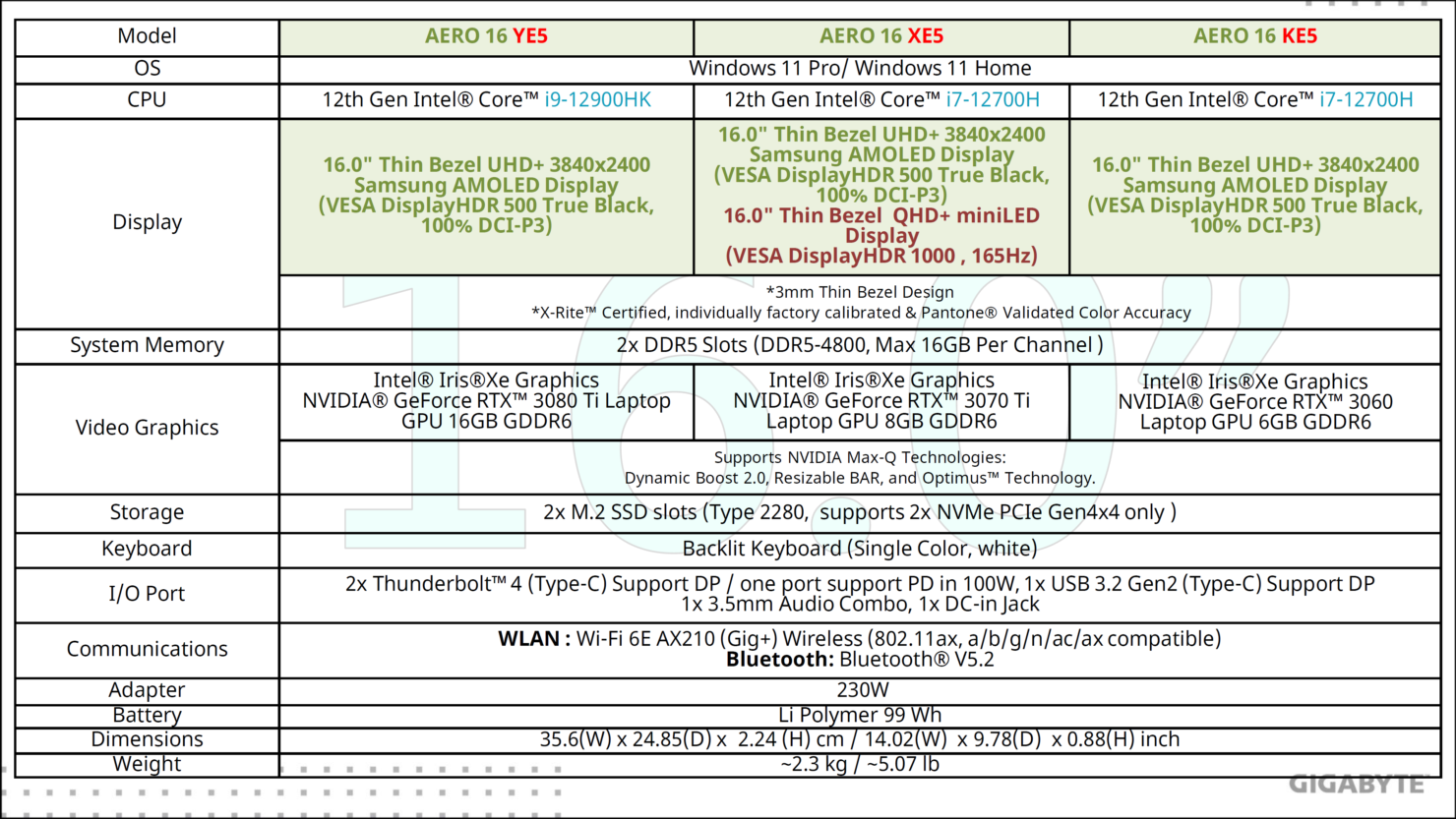


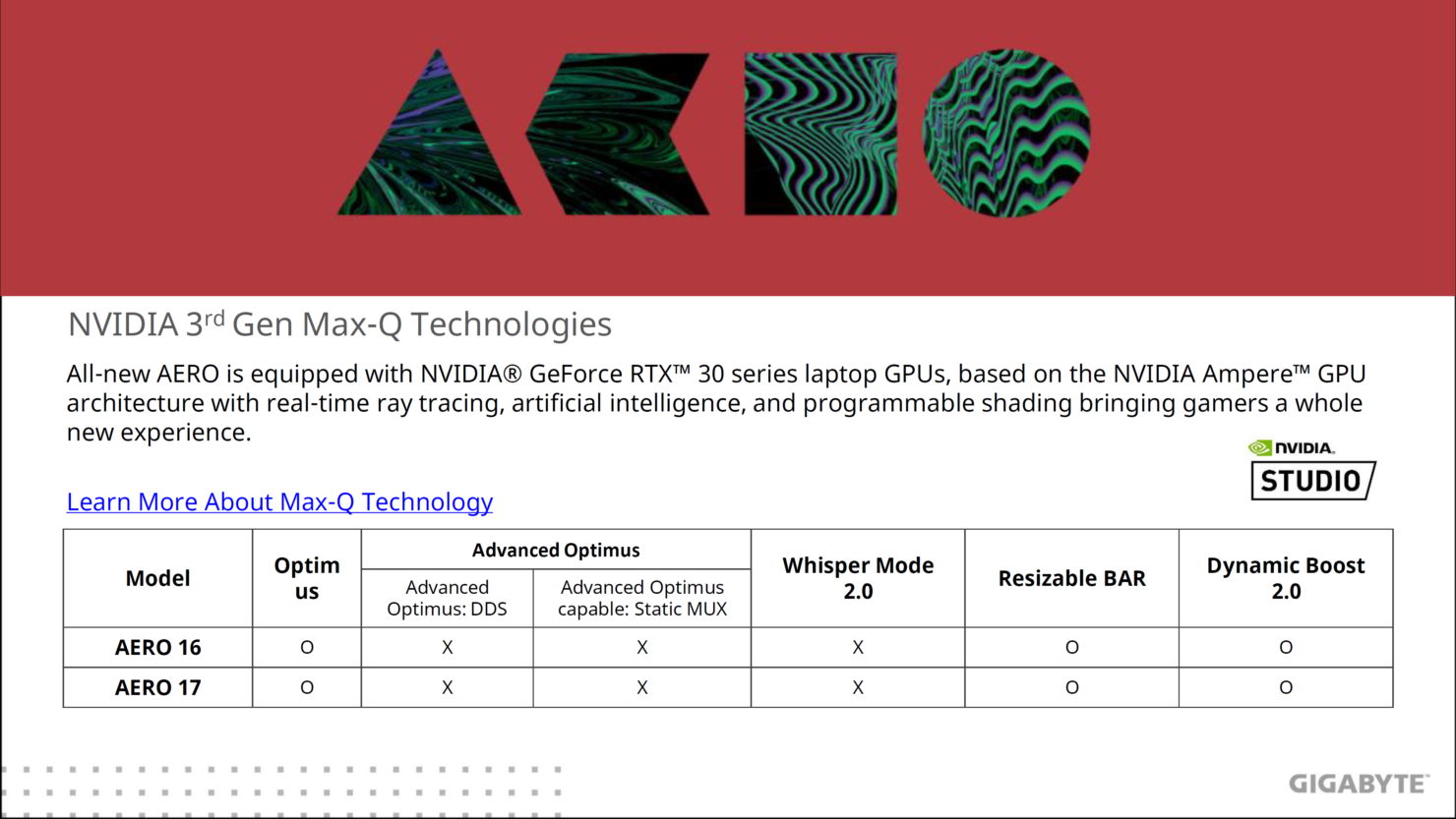

Hardware-wise, we'll start with the similarities between the two sizes. Both models can be configured with Alder Lake CPUs, in the form of the Intel Core i9-12900HK (6 Performance Cores with Hyperthreading and 8 Efficiency cores for 14 cores and 20 threads total) or with a Core i7-12700H CPU (with the same core count but lesser maximum and median clockspeeds).
Memory can be configured up to 64 GB of DDR5-4800, while graphics can be configured up to an RTX 3080 Ti 16 GB laptop GPU. The least-expensive option available stands as an Nvidia RTX 3060 6 GB, with the RTX 3070 Ti 8 GB sitting in the middle-ground between the two. Interestingly, the bigger chassis on the Aero 17 doesn't seem to have changed the maximum operating frequencies for the Nvidia GPUs. All 2022 Aero models feature the same operating frequencies across the board. The RTX 3060, for one, ticks at 1,163 Mhz base and 1,530 MHz boost clocks across models; the RTX 3070 Ti does so at 510 MHz base and 1,035 MHz Boost; and the RTX 3080 Ti ticks at 585 MHz base and 1,125 MHz. All graphics cards are capped at a maximum graphics power set at 105 W.
In terms of storage, both models feature support for dual M.2 Gen 4x4 slots. The base configuration weighs in at 2.4 kg (5.31 pounds). Remember, these aren't classed as ultraportables, but are instead meant to be portable workhorses. The 99 Wh-batteries and 240 W power brick serve as testaments to that. But where the two models differ the most is in the display department.
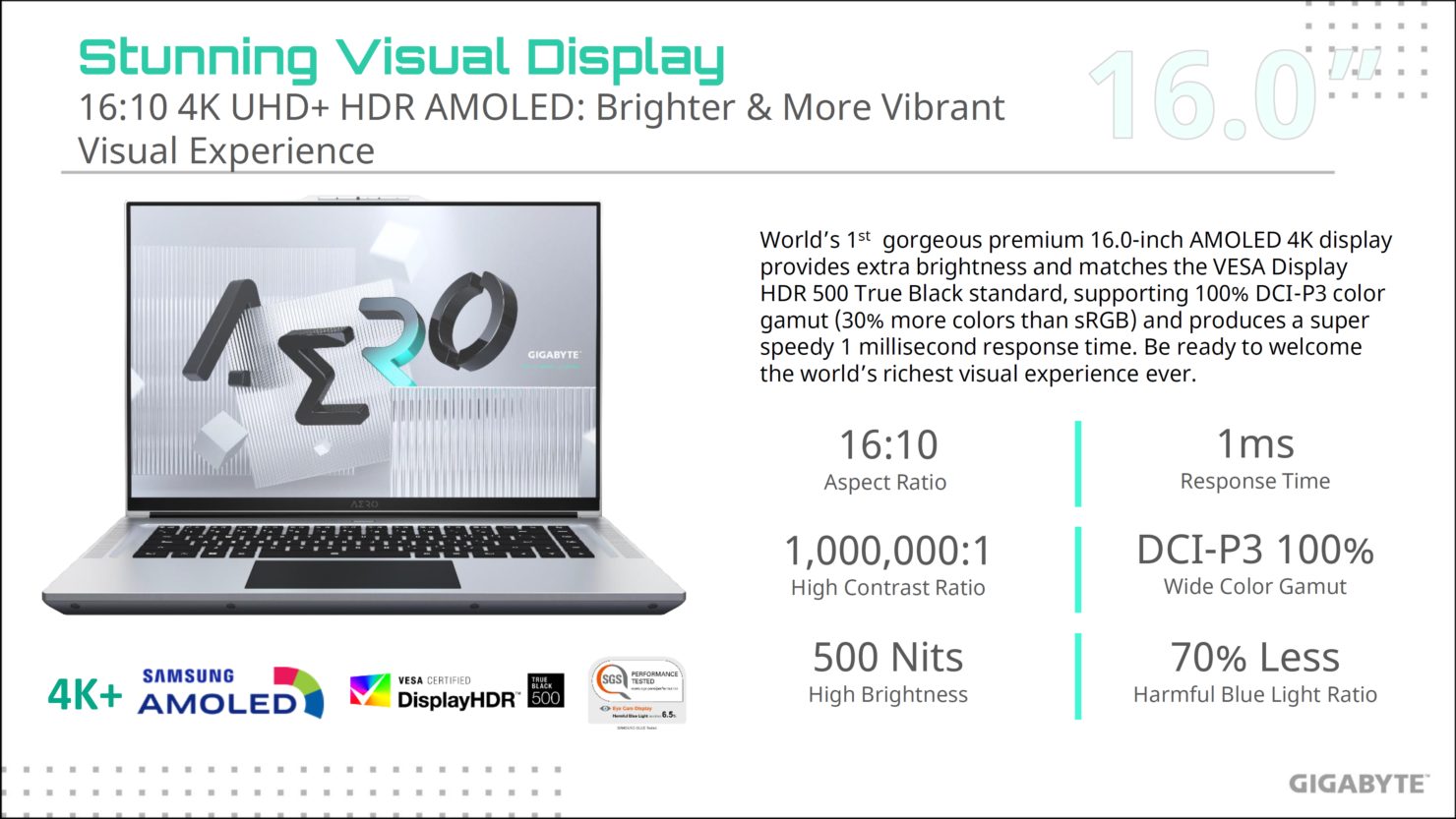
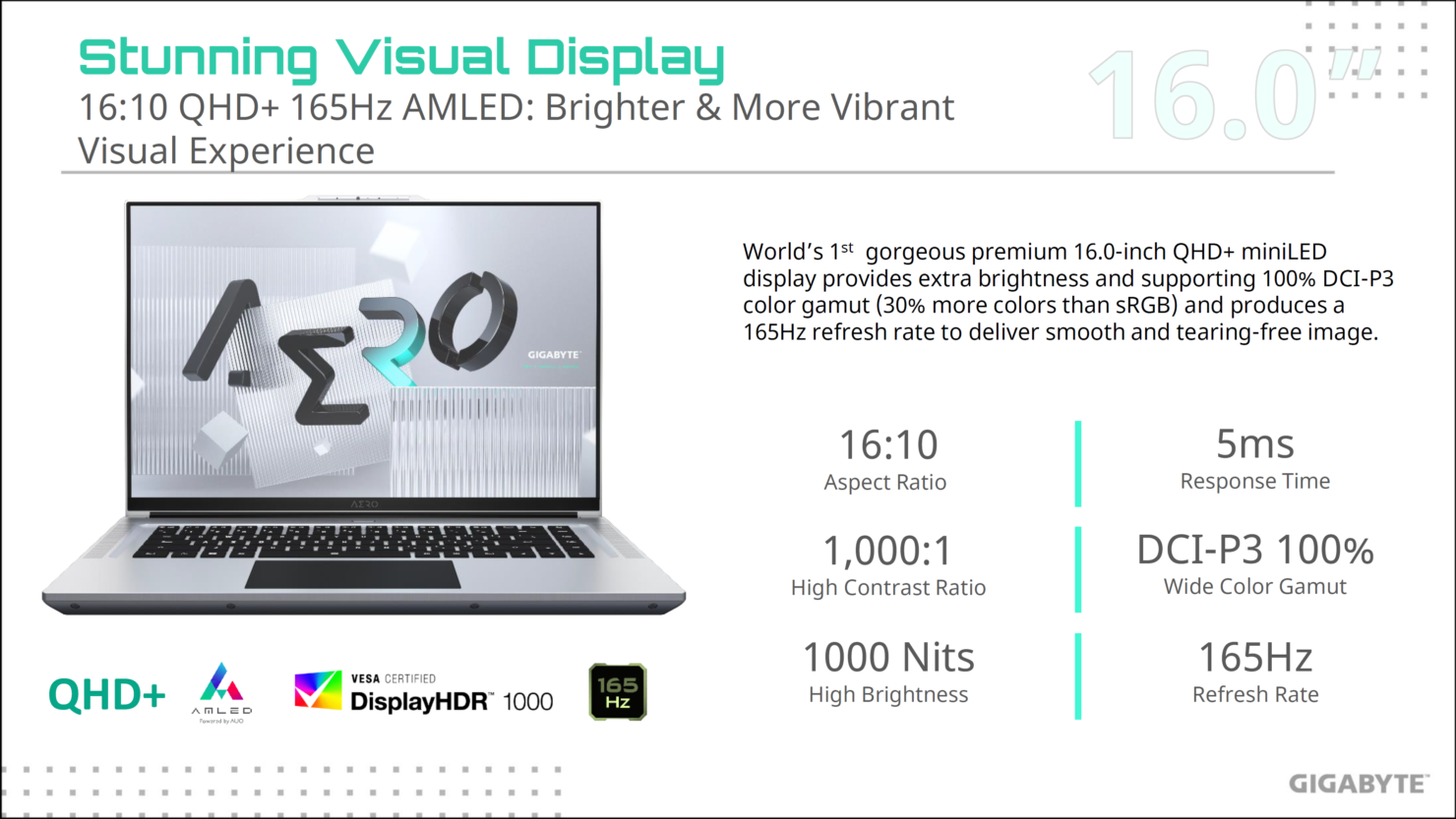


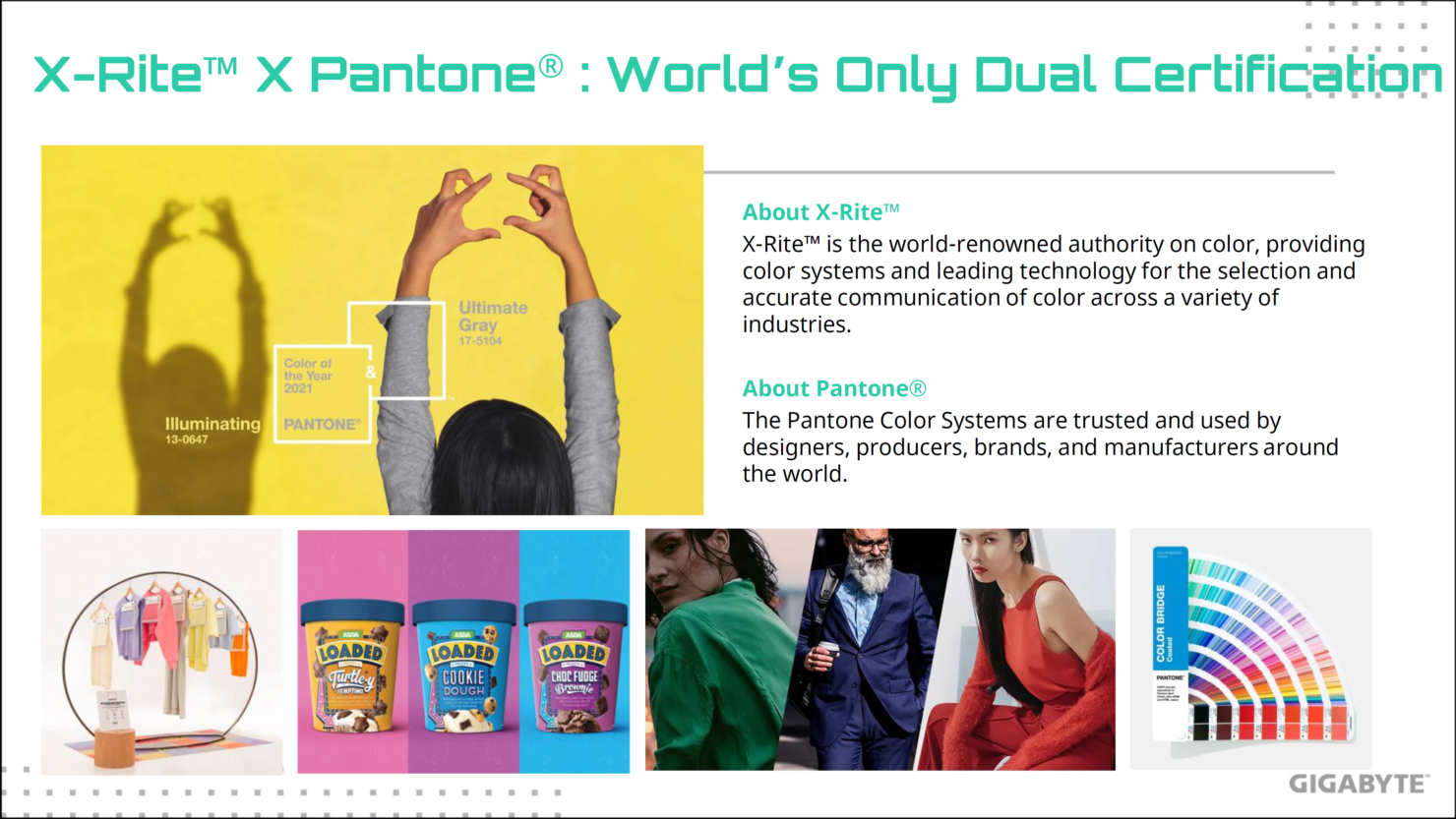
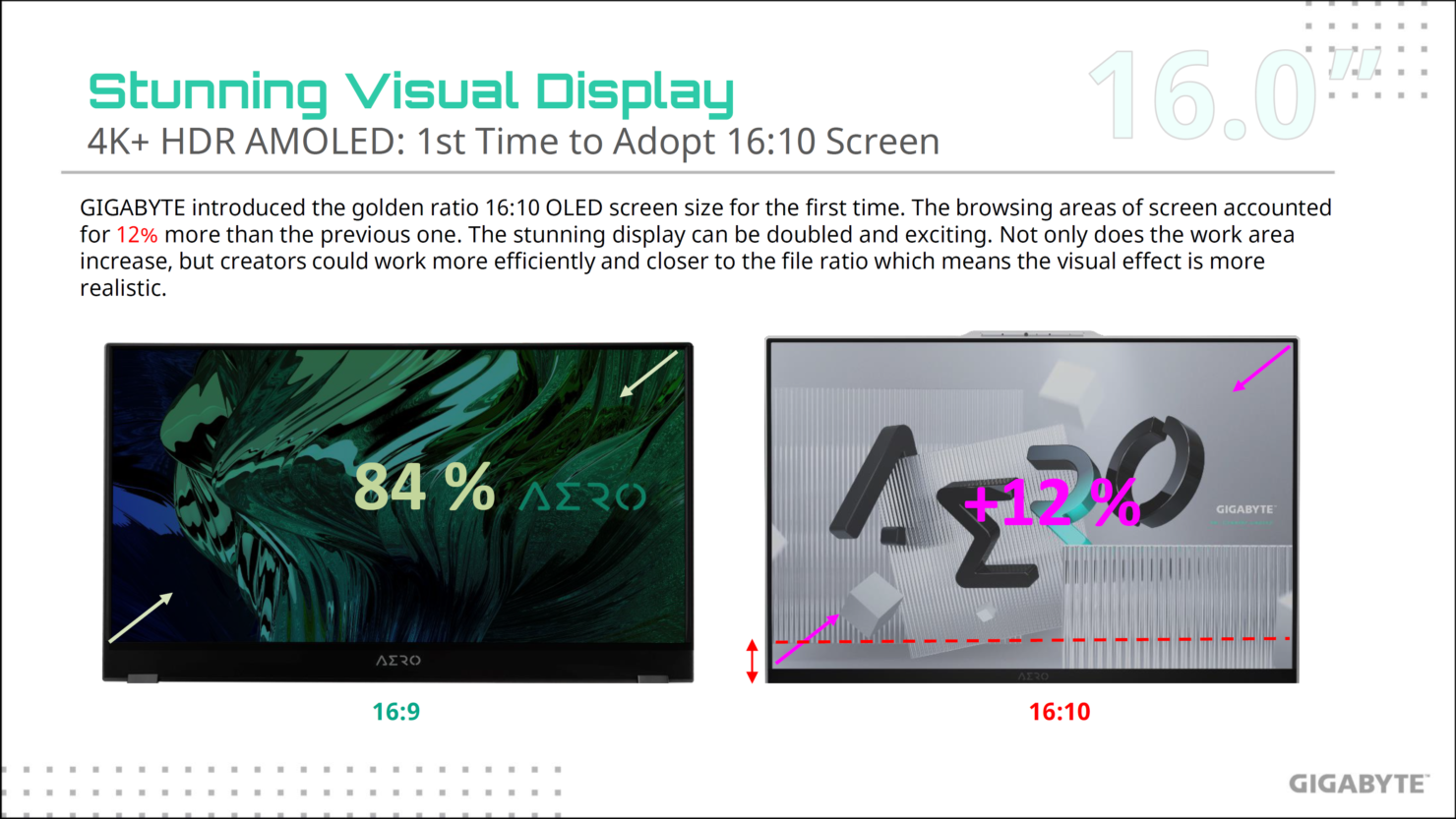
Starting off with the Aero 16, Gigabyte is offering two different display options: The first integrates a 4K, UHD+ Samsung Amoled panel with Display HDR 500 certification. The 1,000,000:1 contrast ratio of OLED technology makes an appearance here, and the maximum brightness - at 500 nits - should make for a good display for working in brighter environments. A 1 ms response time should deliver a strong 60 Hz experience, which is enough for casual gaming - and easier on the hardware than higher refresh rates at 4K resolution.
Get Tom's Hardware's best news and in-depth reviews, straight to your inbox.
The second display option caters more to creators with a penchant for gaming and content consumption, however. The 4K display is replaced by a QHD+ Amled panel. Besides the lower resolution, which brings a 165 Hz refresh rate, this panel option also ushers in DisplayHDR 1,000 certification. A side-effect of these specs, however, is the trade-off in response times, with the QHD Amled option maxing out at 5 ms response times -- still plenty enough for casual gaming scenarios.
The Aero 17 stands as the piece de resistance for the Gigabyte Aero family, and should carry a price to match. The panel will contribute considerably to that cost, as it's a 17-inch, UHD miniLED affair with a 120 Hz refresh rate and DisplayHDR 1,000 certification. While contrast levels take a dive compared to a pure Amoled panel, the 100,000:1 ratio is nothing to scoff at, and could perhaps look even more impressive due to the maximum 1,000 nits brightness of the panel.
The new Aero lineup certainly looks capable of some serious content creation--and gaming on the side. However, the quality of the hardware does point to what's likely going to be wallet-punishing pricing. DDR5 technology, for one, is still very much in its early days, and beyond a few benchmarks and perhaps some specific tasks, likely doesn't justify the price difference compared to less exotic, but still competent DDR4 solutions.
Of course, these are supposed to act as desktop replacement machines, and depending on the model, they'll still offer the chance for some high-refresh gaming in-between work tasks. While Gigabyte says the laptops should be on shelves now, we don't see them in the US yet, so pricing is still up in the air.

Francisco Pires is a freelance news writer for Tom's Hardware with a soft side for quantum computing.